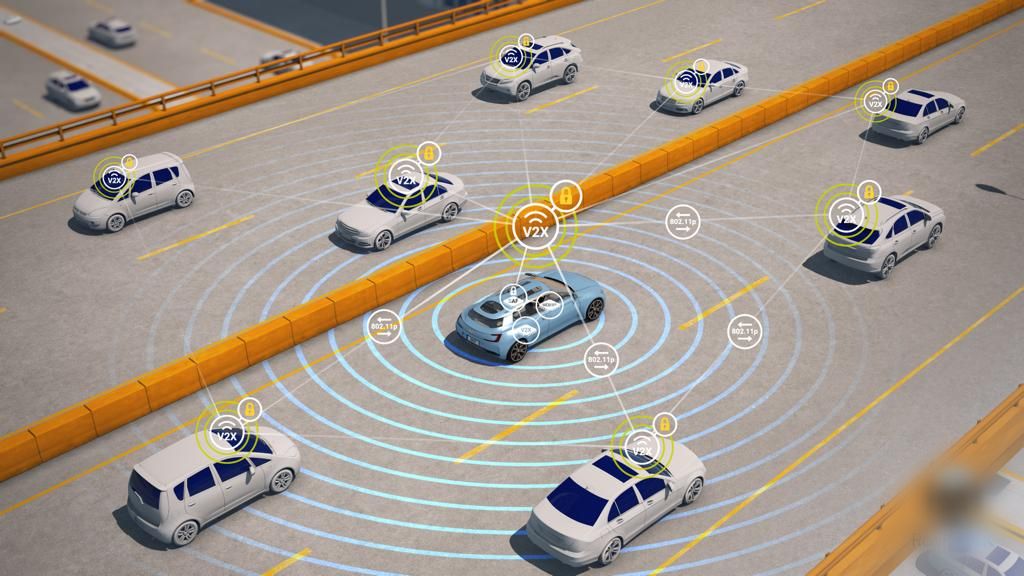
[ad_1]
//php echo do_shortcode(‘[responsivevoice_button voice=”US English Male” buttontext=”Listen to Post”]’) ?>
The key to enabling self-driving cars is the vehicle-to-everything (V2X) technology that allows vehicles to communicate with their surroundings. V2X relies on fast and secure wireless communication to work properly, as different parts of the V2X system must talk to each other so the car can make informed decisions.
The primary objective of V2X communication is to enable vehicles to seamlessly interact with other vehicles, traffic infrastructure and cloud resources, thus augmenting travel safety. To facilitate this goal, V2X technology employs two dominant wireless communication standards: dedicated short-range communications (DSRC) and cellular V2X (C-V2X).
V2X standards must withstand interference from other communication standards to be effective, and interoperability should be considered. To ensure accurate data transmission, V2X requires a communication system that operates without interruption, even as the vehicle travels over vast distances.
The DSRC and C-V2X communication standards exhibit similarities in their integrated security features and operating frequency range. Both standards employ the 5.9-GHz band for communication and utilize the same message sets—SAE J2945 and J2735. DSRC, however, is a proven technology, with its initial adoption coming from Toyota car models.
The intricate connectivity and data-intensive workloads in V2X necessitate a high-speed wireless network. C-V2X, leveraging long-term evolution (LTE) and existing cellular infrastructure, is viewed as a potential game-changer, enabling vehicles to access high-speed networks even in high-density areas along roadsides.
The implementation of V2X technology, coupled with advanced driver-assistance systems (ADAS), is already revolutionizing the transportation and logistics industry as we head toward complete autonomy. As V2X technology continues to expand, the transportation sector is well positioned to leverage evolving connectivity systems.
What is DSRC?
DSRC is a standard for communication between vehicles and roadside infrastructure, which uses the IEEE 802.11p technology as its underlying physical and medium access layer.
It operates on the 5.9-GHz frequency band with a communication range of up to 1,000 meters and is equipped with integrated security features that ensure reliable and secure communication. The standard also utilizes the SAE J2735 message set, which includes standardized messages for safety messages and emergency electronic brake light warnings.

Despite its widespread adoption and deployment in various regions globally, including the United States and Japan, DSRC still faces certain challenges. For instance, in high-density scenarios where there are many vehicles, the intensity of channel contention among vehicles increases significantly. This leads to a considerable degradation of IEEE 802.11 performance due to a high-transmission collision rate and a large channel-access delay.
The challenges posed by the DSRC architecture have sparked curiosity in exploring the potential of cellular technologies to facilitate efficient and dependable V2X communication.
Transition toward C-V2X
C-V2X can handle high-network–capacity requirements and support data-intensive workloads with high bandwidth. It has two transmission modes:
- Direct safety communication that enables vehicle-to-vehicle (V2V), vehicle-to-infrastructure (V2I) and vehicle-to-pedestrian (V2P) communication in intelligent transportation system (ITS) bands like 5.9 GHz
- Network communication that operates in licensed spectrum of mobile operators, allowing vehicle-to-network communication
C-V2X technology is a fusion of the strengths of cellular network and radio base stations that enable better safety services and autonomous driving. The latest versions of C-V2X, as per 3GPP releases, have higher throughput and wider carrier support than their previous versions.
To address the problem of channel contention in high-vehicle–density scenarios faced by DSRC, C-V2X adapts algorithms that detect the available resources, organize them and select the least congested resources for transmission. In general, C-V2X can provide a more efficient resource allocation and a forward-compatible evolution path to 5G.

Researchers predict that in the near future, no single V2X technology will dominate; rather, a combination of DSRC and cellular network technology will be utilized for efficient communication. This DSRC–cellular hybrid architecture may face certain challenges in terms of vehicle mobility, such as issues with vertical handover and network selection. There has been extensive research, however, to mitigate these issues and propose new architectures for global deployment.
Semiconductor industry contribution
NXP Semiconductors has expressed skepticism regarding the deployment of LTE C-V2X Release 14. Its perspective is that 5G V2X, which is the next logical step, is still several years away. In partnership with Hitachi, NXP has developed wireless connectivity modules, including a flexible DSRC-based V2X solution that caters to the Japanese automotive market.
Qualcomm is placing its faith in the C-V2X connectivity standard, in contrast to NXP. The company’s C-V2X 9150 system-on-chip supports 5G and other ADAS sensors, including C-V2X direct communication modes that facilitate low-latency communication for V2I, V2V and V2P interactions. The chipset operates at the 5.9-GHz band, providing superior reliability and performance compared with similar radar technology, according to Qualcomm.
Alps Alpine, a Tokyo-based chipmaker, offers a variety of products that cater to V2X communication, with a particular focus on the UMCC1 Series Cellular V2X All-in-One Communication Module that supports a wide range of applications. This device has been developed for the Chinese market and integrates 3GPP Release 14, which is an LTE-based communication system for V2X services.
In addition to these technology companies, several other chip manufacturers, such as STMicroelectronics, Murata, Quectel and u-blox, are preparing for mass production of chipsets and modules.
[ad_2]






